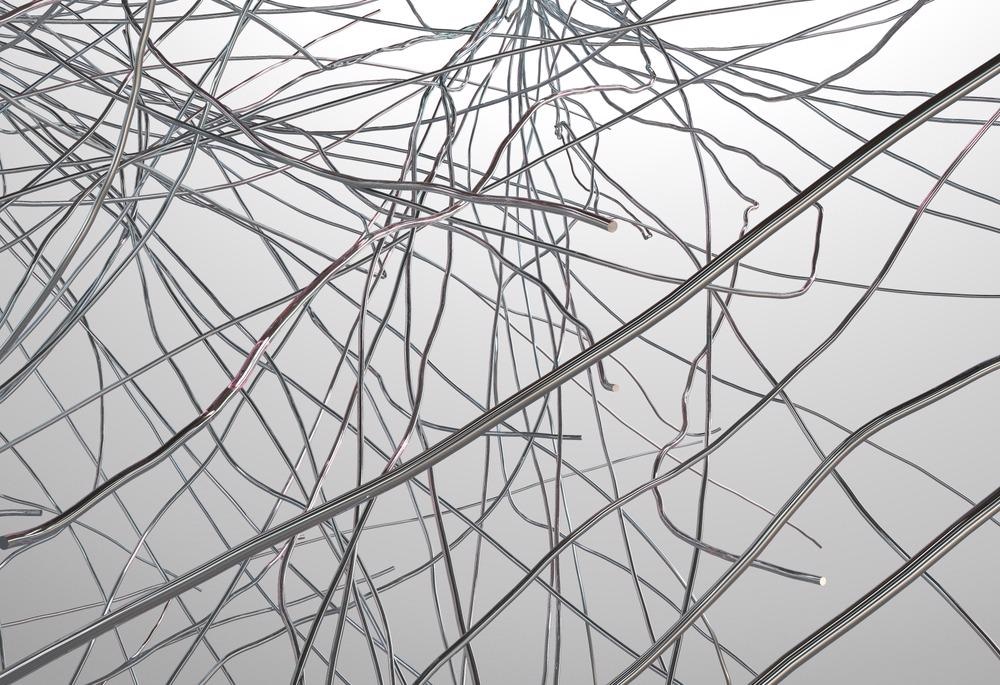In a recent study published in the journal Applied Surface Science, researchers synthesized phosphorous (P) and sulfur (S) codoped carbon nitra ide (PSCN) nanosheets using a facile two-step template-free method for photocatalytic antibacterial applications such as healing wound infections.

Study: Phosphorus and Sulfur Codoped Carbon Nitride Nanosheets with Enhanced Photocatalytic Antibacterial Activity and Promotion of Wound Healing. Image Credit: Kateryna Kon/Shutterstock.com
The novel antibacterial agent exhibited superior antibacterial properties compared to heptazine-based graphitic carbon nitride (g-C3N2) as it generated more reactive oxygen species due to its enhanced photocatalytic properties. Moreover, it demonstrated 99.2% efficiency against Staphylococcus aureus and 97% against Escherichia coli when exposed to a 300 W xenon lamp for 2.5 and 2 hours, respectively.
Photocatalytic Antibacterial Drugs
The immediate response to any wound is to protect it from bacterial infection as soon as possible. However, bacterial strains are consistently developing resistance against traditional antibiotics. Nano antibacterial materials have shown promising results in inhibiting bacterial resistance owing to their high specific surface area and multifunctional physicochemical properties. Especially, semiconductor-based photocatalytic nanoantibotic materials are known to produce more reactive oxygen species (ROS) that inactivate bacteria.
Semiconductor photocatalysts generate active electron-hole pairs under irradiated light, which react with water and oxygen (O2) on the surface of the catalyst and produce ROS such as hydroxyl (•OH-) and superoxide (•O2-) radicals. These radicals destroy the cell walls, cell membranes, and active components of bacteria.
Currently, metal-free photocatalytic nanomaterials such as graphitic carbon nitride (g-C3N4) have been extensively used for healing wound infections owing to biosafety, ease of synthesis, and adequate bandgap of ~2.8 eV. However, the bulk structure of g-C3N4 synthesized by the conventional thermal polymerization process has a very small specific surface area, low conductivity, and high electron recombination rate. Many studies have shown that doping of g-C3N4 can improve its photoreactivity.
About the Study
In this study, researchers fabricated PSCN nanosheets using the solvothermal method combined with high-temperature hydrothermal stripping to induce P and S doping. Firstly, bulk PSCN was synthesized using a facile solvothermal process, in which dicyandiamide powder, thiourea, and adenosine triphosphate were dissolved in deionized (DI) water followed by heating at 600°C for 2 hours.
After that, the bulk PSCN was dissolved in DI water and transferred to a reactor lining and hydrothermally treated followed by liquid nitrogen stripping and lyophilization to obtain PSCN nanosheets. Two more types of samples, bulk g-C3N4 and g-C3N4 nanosheets, were synthesized to compare with PSCN nanosheets.
Subsequently, the cytotoxicity of all samples to cultured S. aureus and E. coli bacteria was evaluated using the colony-forming unit (CFU) counting method. All antibiotic-containing bacteria samples were exposed to a 300 W xenon lamp. Finally, Cell Counting Kit-8 and fluorescein diacetate (FDA) staining methods were used to investigate the cytotoxicity of g-C3N4 and PSCN nanosheets.
Observations
Scanning electron microscopy (SEM) and transmission electron microscopy (TEM) images showed that PSCN nanosheets had a loose porous structure with wrinkles at the edge. This indicated an increase in specific surface area, which promoted the production of more photoinduced electrons and holes. The size of PSCN nanosheets was much smaller than that of g-C3N4 nanosheets. The average diameters of g-C3N4 and PSCN nanosheets were 8785 and 2682 nm, respectively. The primary reason for the difference in size was attributed to the larger atomic radii of P and S compared to that of C and N.
The FT-IR spectra showed all three types of samples, viz. g-C3N4, g-C3N4 nanosheets, and PSCN nanosheets had a sharp peak at 807 cm−1 associated with the stretching of the heptazine unit. The absorption peak between ~300–400 nm belonged to π-π transitions of C=N bonds. PSCN nanosheets demonstrated 99.2% efficiency against S. aureus and 97% against E. coli bacteria under visible light.
Conclusions
In summary, the researchers of this study synthesized novel semiconductor-based photocatalytic nanomaterials, PSCN nanosheets, and compared its antibacterial performance with widely used g-C3N4 nanosheets. PSCN demonstrated better bactericide properties owing to its high specific surface area that promoted the production of more ROS. Additionally, it performed excellently against two bacteria namely, S. aureus and E. coli. This new material is a promising bactericide for healing wound infection.
Disclaimer: The views expressed here are those of the author expressed in their private capacity and do not necessarily represent the views of AZoM.com Limited T/A AZoNetwork the owner and operator of this website. This disclaimer forms part of the Terms and conditions of use of this website.
Source:
Fang, Y., Pei, S., Zhuo, L., Cheng, P., Yuan, H., Zhang, L., Phosphorus and Sulfur Codoped Carbon Nitride Nanosheets with Enhanced Photocatalytic Antibacterial Activity and Promotion of Wound Healing, Applied Surface Science, 2022, 152761, ISSN 0169-4332, https://www.sciencedirect.com/science/article/pii/S0169433222003403